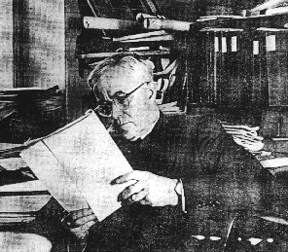Gradually plasma research spread in other directions, of which three were particularly significant.
First, the development of radio led to the discovery of the ionosphere, the natural "plasma roof" above the atmosphere, which bounces back radio waves and sometimes absorbs them. Starting with the study of the propagation of radio waves in the ionosphere, a wide variety of plasma waves was identified, in general spreading differently along magnetic field lines than perpendicular to them.
Second, astrophysicists recognized that much of the universe consisted of plasmas, and that understanding astrophysical processes required a better grasp on plasma physics. This was particularly true for the Sun, whose intensely magnetic sunspots produced many intricate plasma phenomena (e.g. solar flares).
Finally, the creation of the atomic bomb raised great interest in nuclear energy as a possible source of power for the future. The Sun releases its energy by combining hydrogen nuclei to form helium, but this thermonuclear fusion process needs enormous temperatures and pressures, like those found at the center of the Sun. The process is easier in a gas consisting of the heavy forms (isotopes) of hydrogen, but even there, such enormous temperatures are needed that no laboratory container could hold the gas--either the container would vaporize, or (more likely) it would cool the gas to where all nuclear fusion stopped.
However, since gas at such a temperature becomes a plasma, the idea arose to hold it trapped inside a magnetic field, without it actually touching any material walls. The effort to produce such "controlled thermonuclear fusion" started with "Project Sherwood" of the early 1950s and has grown into a great international undertaking, with thousands of scientists and huge, sophisticated machines. Gradually ways were found to foil the different modes by which the magnetic field rapidly spilled its plasma, and both the temperature and density of the plasma were slowly increased. Recently a fusion experiment managed to extract as much fusion energy as was invested in the plasma, but we are still a long way from commercial use of such energy.
When satellites discovered the radiation belt and began exploring the magnetosphere, a fourth direction opened, space plasma physics. From fusion research, space scientists borrowed the theory of plasma trapping by a magnetic field, and from ionospheric physics, the theory of plasma waves. Astrophysics provided, among other things, notions of magnetic processes for energy release and particle acceleration. Today space plasma physics is an active field, contributing to the understanding of not just observations in space but also of plasmas in general.

 Official GSFC Home Page
Official GSFC Home Page  NASA WWW Home Page
NASA WWW Home Page